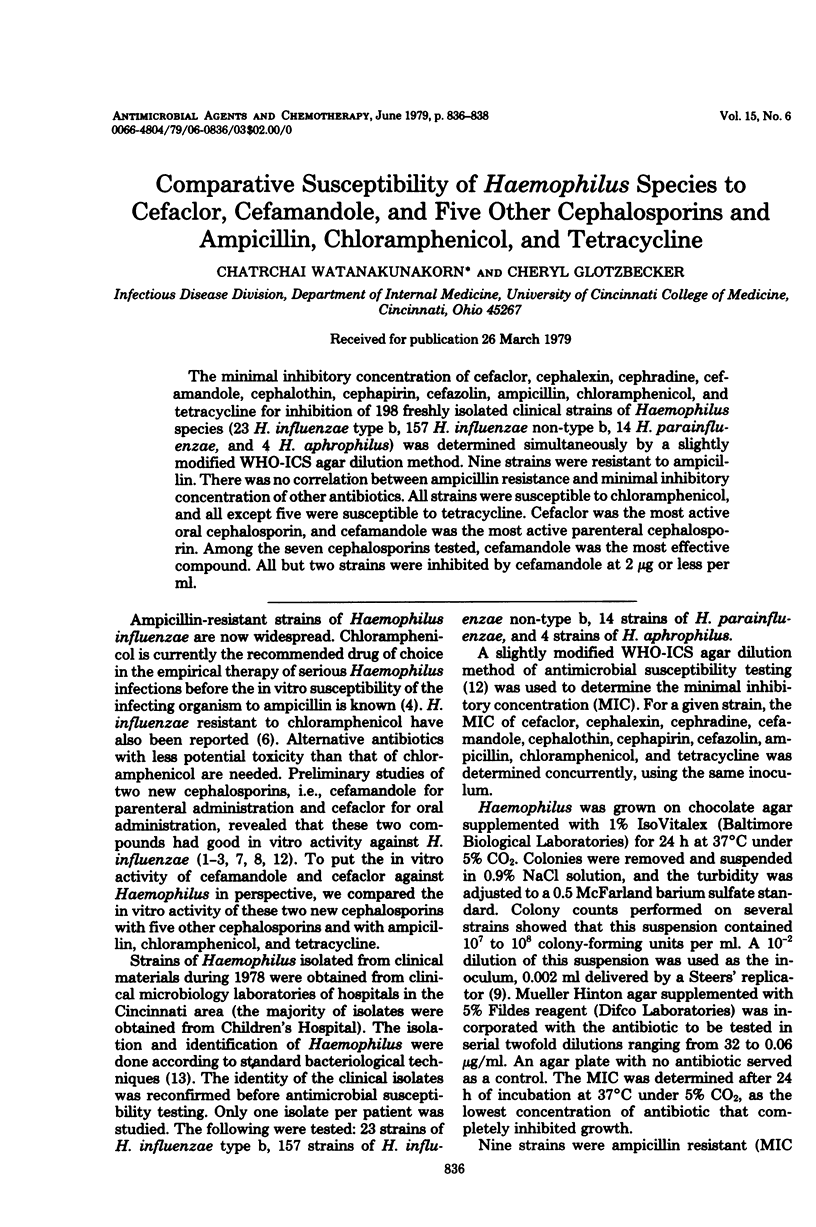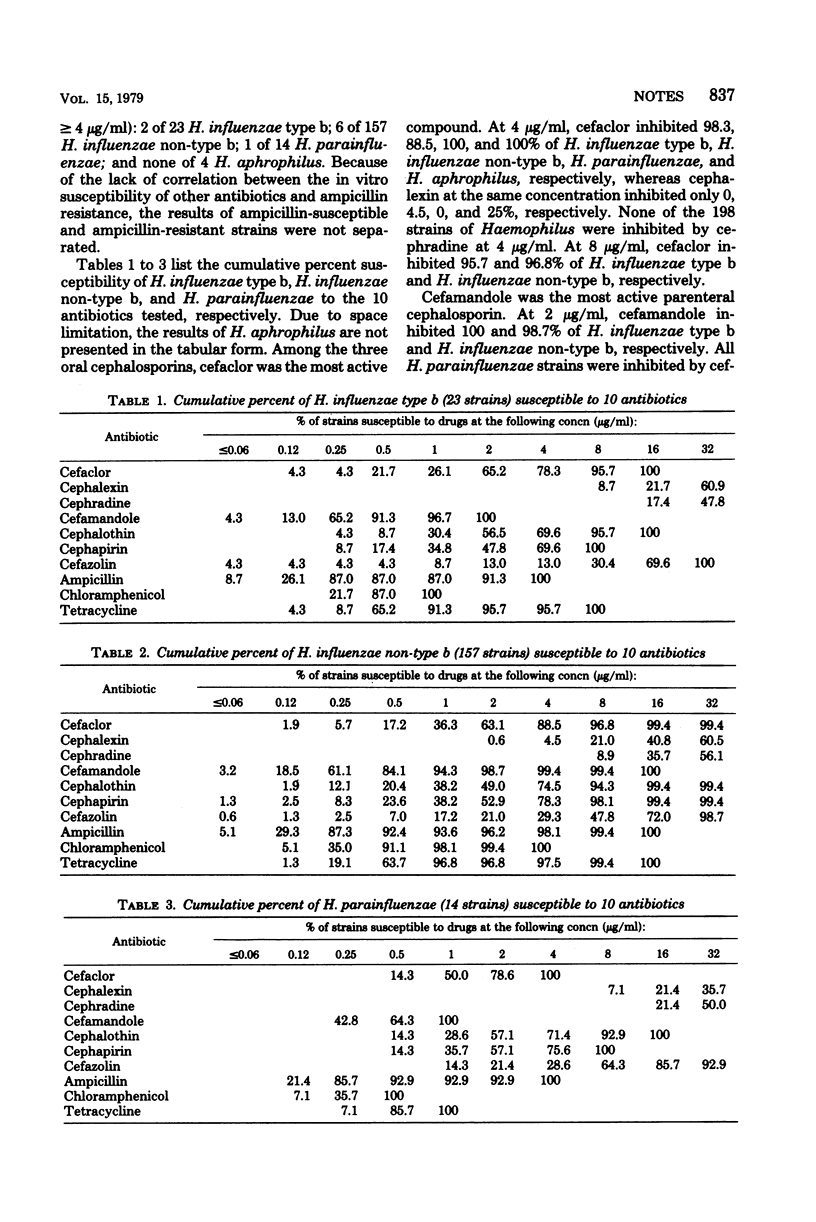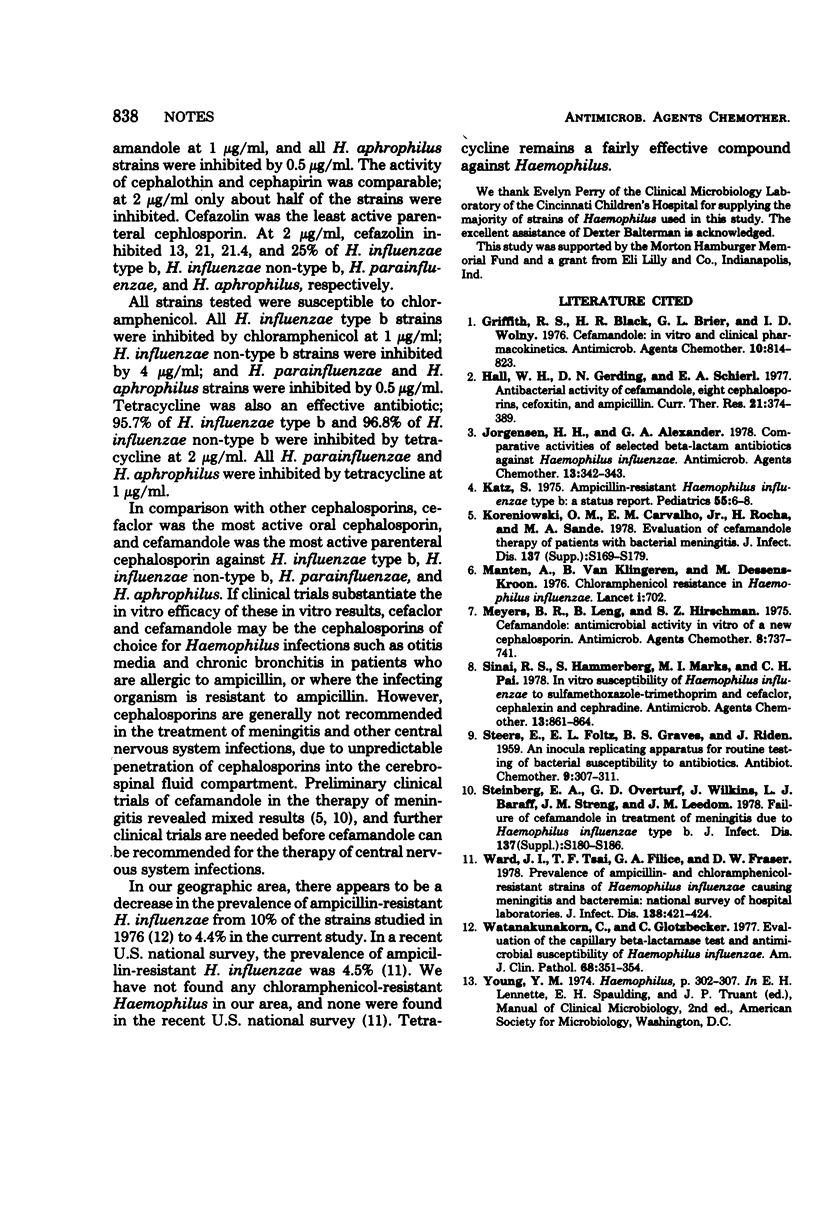Abstract
The minimal inhibitory concentration of cefaclor, cephalexin, cephradine, cefamandole, cephalothin, cephapirin, cefazolin, ampicillin, chloramphenicol, and tetracycline for inhibition of 198 freshly isolated clinical strains of Haemophilus species (23 H. influenzae type b, 157 H. influenzae non-type b, 14 H. parainfluenzae, and 4 H. aphrophilus) was determined simultaneously by a slightly modified WHO-ICS agar dilution method. Nine strains were resistant to ampicillin. There was no correlation between ampicillin resistance and minimal inhibitory concentration of other antibiotics. All strains were susceptible to chloramphenicol, and all except five were susceptible to tetracycline. Cefaclor was the most active oral cephalosporin, and cefamandole was the most active parenteral cephalosporin. Among the seven cephalosporins tested, cefamandole was the most effective compound. All but two strains were inhibited by cefamandole at 2 μg or less per ml.
Full text
PDF


Selected References
These references are in PubMed. This may not be the complete list of references from this article.
- Griffith R. S., Black H. R., Brier G. L., Wolny J. D. Cefamandole: in vitro and clinical pharmacokinetics. Antimicrob Agents Chemother. 1976 Nov;10(5):814–823. doi: 10.1128/aac.10.5.814. [DOI] [PMC free article] [PubMed] [Google Scholar]
- Jorgensen J. H., Alexander G. A. Comparative activities of selected beta-lactam antibiotics against Haemophilus influenzae. Antimicrob Agents Chemother. 1978 Feb;13(2):342–343. doi: 10.1128/aac.13.2.342. [DOI] [PMC free article] [PubMed] [Google Scholar]
- Katz S. L. Ampicillin-resistant Hemophilus influenzae type b: a status report. Pediatrics. 1975 Jan;55(1):6–8. [PubMed] [Google Scholar]
- Korzeniowski O. M., Carvalho E. M., Jr, Rocha H., Sande M. A. Evaluation of cefamandole therapy of patients with bacterial meningitis. J Infect Dis. 1978 May;137 (Suppl):S169–S179. doi: 10.1093/infdis/137.supplement.s169. [DOI] [PubMed] [Google Scholar]
- Manten A., van Klingeren B., Dessens-Kroon M. Chloramphenicol resistance in Haemophilus influenzae. Lancet. 1976 Mar 27;1(7961):702–702. doi: 10.1016/s0140-6736(76)92832-4. [DOI] [PubMed] [Google Scholar]
- Meyers B. R., Leng B., Hirschman S. Z. Cefamandole: antimicrobial activity in vitro of a new cephalosporin. Antimicrob Agents Chemother. 1975 Dec;8(6):737–741. doi: 10.1128/aac.8.6.737. [DOI] [PMC free article] [PubMed] [Google Scholar]
- Sinai R., Hammerberg S., Marks M. I., Pai C. H. In vitro susceptibility of Haemophilus influenzae to sulfamethoxazole-trimethoprim and cefaclor, cephalexin, and cephradine. Antimicrob Agents Chemother. 1978 May;13(5):861–864. doi: 10.1128/aac.13.5.861. [DOI] [PMC free article] [PubMed] [Google Scholar]
- Steinberg E. A., Overturf G. D., Wilkins J., Baraff L. J., Streng J. M., Leedom J. M. Failure of cefamandole in treatment of meningitis due to Haemophilus influenzae type b. J Infect Dis. 1978 May;137 (Suppl):S180–S189. doi: 10.1093/infdis/137.supplement.s180. [DOI] [PubMed] [Google Scholar]
- Ward J. I., Tsai T. F., Filice G. A., Fraser D. W. Prevalence of ampicillin- and chloramphenicol-resistant strains of Haemophilus influenzae causing meningitis and bacteremia: national survey of hospital laboratories. J Infect Dis. 1978 Sep;138(3):421–424. doi: 10.1093/infdis/138.3.421. [DOI] [PubMed] [Google Scholar]
- Watanakunakorn C., Glotzbecker C. Evaluation of the capillary beta-lactamase test and antimicrobial susceptibility of Haemophilus influenzae. Am J Clin Pathol. 1977 Sep;68(3):351–354. doi: 10.1093/ajcp/68.3.351. [DOI] [PubMed] [Google Scholar]


